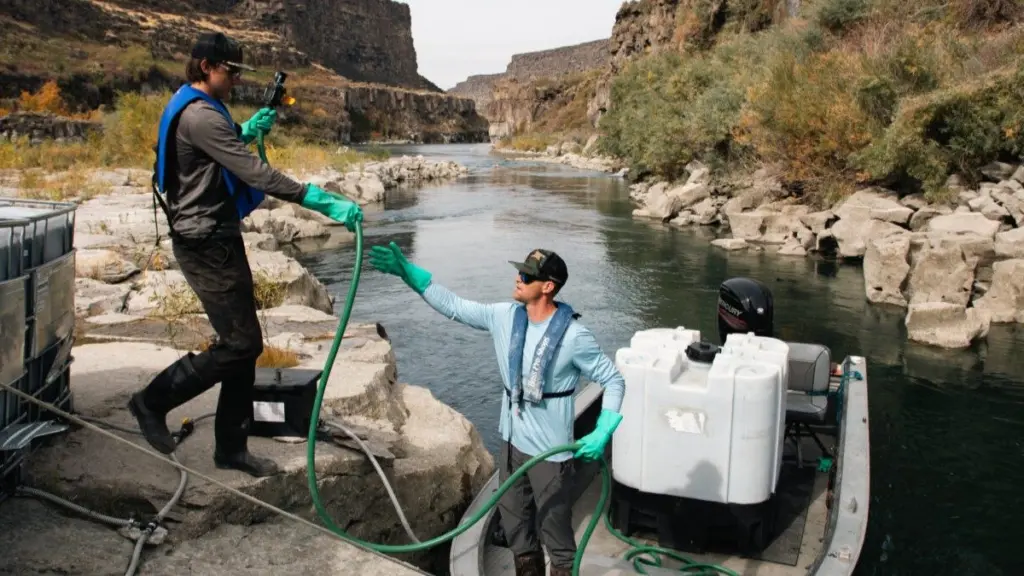BOISE, ID – The Idaho State Board of Examiners voted unanimously Tuesday to give the Idaho State Department of Agriculture the authority to pay unexpected and unbudgeted expenses to fight quagga mussels after the invasive mussels were again detected in the Snake River near Twin Falls.
The board voted to approve deficiency warrant spending authority to fight the quagga mussels during a meeting at the Idaho State Capitol in Boise.
The deficiency warrant process is similar to using a credit card to pay unexpected bills.
The process has been used by the Idaho State Board of Examiners and Idaho Department of Lands to allow the state to pay unexpected wildfire costs that exceed the amount of funding provided by the Idaho Legislature.
Any additional expenses to fight quagga mussels would then be added to the state budget at a time when state revenues are already coming in short of budget projections. The revenue shortfall is occurring after the Republican-controlled Idaho Legislature spent more than $450 million this year to pay for tax cuts and a new education tax credit that reimburses families for expenses including tuition at private, religious schools.
Gov. Brad Little has already ordered all state agencies other than public schools to cut spending by 3% during the current fiscal year because of revenue shortfalls, the Idaho Capital Sun previously reported.
The Idaho State Board of Examiners is made up of Idaho’s governor, secretary of state and attorney general, with the Idaho state controller serving as the board’s ex officio secretary.
Quagga mussels are an invasive species first detected in the Snake River in Idaho in 2023
On Sept. 12, the Idaho State Department of Agriculture announced that invasive quagga mussels were detected in the Snake River near Twin Falls for the third year in a row, the Sun previously reported.
State officials said extensive water testing indicates the stretch of river affected by quagga mussels is smaller than a year ago.
Since 2023, state officials have administered a copper-based chemical in the affected portion of the Snake River in an attempt to eradicate all quagga mussels. In addition to killing quagga mussels, the copper-based chemical also killed thousands of fish in 2023, which floated to the surface of the river.
Among the six or seven tons of fish killed by the copper-chemical in 2023 were at least 48 white sturgeon, the oldest of which was 35 years old and up to eight feet in length, the Sun previously reported.
State officials said they enacted an aggressive treatment plan seeking to kill all quagga mussels because the invasive mussels reproduce rapidly and are capable of clogging pipes used for irrigation or drinking water and can cover the hulls of boats and other watercraft. Left unchecked, mussels could pose a threat to agriculture, drinking water and recreation, officials have said.
“Quagga mussels pose a serious threat to Idaho’s water infrastructure, ecosystems and economy,” Idaho State Department of Agriculture Director Chanel Tewalt said in a written statement Sept. 12. “Full eradication remains the goal, but even reaching a level of containment is uncommon in other U.S. systems. ISDA’s treatments are critical to prevent widespread impacts to agriculture, power generation and Idaho’s aquatic environments.”
How does Idaho plan to pay unbudgeted expenses to fight quagga mussels?
In the event costs to fight invasive species exceed the amount of funding provided in the state budget, Idaho law gives the Idaho State Board of Examiners the power to authorize up to $5 million in deficiency warrants against the state’s general fund budget to fight the threat of an invasive species on state-owned land or water when requested by the director of the Idaho State Department of Agriculture.
The department did not list a specific dollar amount in Tuesday’s request, and the Idaho State Board of Examiners did not specify a dollar amount when approving the request.
Efforts to reach the Idaho State Department of Agriculture were not immediately successful Tuesday afternoon.
State budget records show the department has already spent millions of dollars fighting quagga mussels. In 2023, the Sun reported the state spent $3 million treating a 16-mile stretch of the Snake River with the copper-based chemical.
State budget records also show the department had a $6.6 million line item in last year’s fiscal year 2025 budget to fight quagga mussels. That money was used to double water sampling statewide, increase the number of inspection and contamination stations, increase staffing and support communication efforts, state records show.
Any additional bills paid through deficiency warrants in the current fiscal year 2026 could add even more pressure to a state budget that is experiencing revenue shortfalls.
Through the first two months of the 2026 fiscal year, state revenues have come in about $22.6 million, or 2.8%, below the Idaho Division of Financial Management’s revised forecast, the Sun reported Monday.
In simplified terms, revenues are the amount of money the state has available to spend on expenses in the budget. The Idaho Constitution prohibits the state from spending more money than it has in available revenue.
The state is now projecting Idaho will end the current fiscal year 2026 in June with a $21.8 million surplus. However, that projected surplus may not tell the full budget story.
The Idaho Department of Health and Welfare said it needs another $60 million in supplemental funding this fiscal year to pay its Medicaid bills, the Sun previously reported. The Idaho Legislature is not in session and has not acted on that $60 million request, which is not included in the state’s latest budget projections.
Additionally, the state’s latest budget projection does not include the cost of conforming to federal tax changes included in the One Big Beautiful Bill Act that President Donald Trump signed into law July 4. One outside estimate from the nonprofit Tax Foundation estimates it could cost Idaho another $167 million to conform to tax changes such as the no tax on tips, no tax on workers’ overtime, no tax on borrower’s car loan interest and an expanded deduction for seniors, which would all reduce revenues.
Because of the $60 million Medicaid supplemental funding request and the estimated $167 million cost to conform to tax changes authorized by Trump, Idaho House Minority Leader Ilana Rubel, D-Boise, told the Sun that Idaho’s projected $21.8 million budget surplus could actually turn out to be a $200 million deficit by the time the current fiscal year is over in June.
“This is not a disaster on the horizon; this is a disaster right now,” Rubel told the Sun in an interview Monday.
This story first appeared on Idaho Capital Sun.





